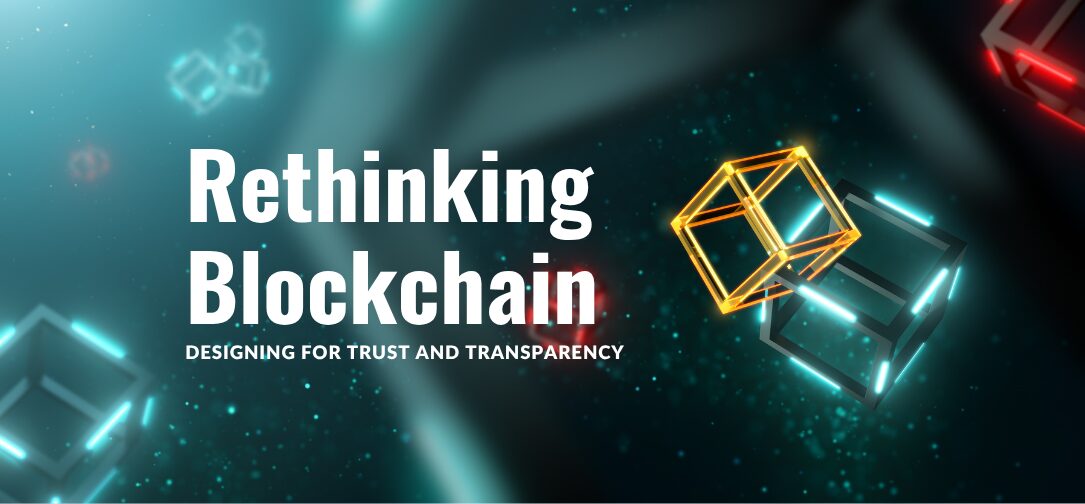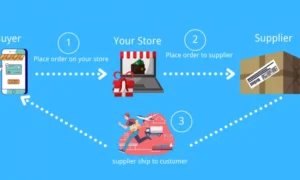Blockchain technology has evolved far beyond its early association with cryptocurrency transactions. At its core, it enables the creation of digital trust — a decentralized architecture where independent participants can interact directly, without relying on centralized intermediaries. Protocols built on distributed consensus provide critical guarantees around transparency, data integrity, and system resilience, even across complex or adversarial networks.
Despite this progress, public perception remains stuck in the past. For many outside the field, blockchain is still synonymous with market hype, speculative assets, and questionable projects. This misalignment slows real adoption: meaningful engineering efforts receive limited visibility, while infrastructure-grade innovations often struggle to earn the trust, attention, and funding they require to scale.
One engineer working to shift this perception is Vladislav Markushin, technical lead at Composable Foundation. His team achieved a major milestone by implementing trustless interoperability between Ethereum, Solana, and Polkadot — a complex engineering challenge made possible by adapting the IBC protocol, originally developed for Cosmos, to operate across these heterogeneous ecosystems. The result: transaction validation is handled entirely within the native security models of each network, with no need for centralized bridges or third-party validators.
It’s a concrete example of blockchain’s broader potential — not merely as a platform for issuing tokens, but as a foundational layer for the next generation of distributed, secure, and composable digital infrastructure.
Why Blockchain Is Still Misunderstood
Public perception of blockchain remains disproportionately influenced by market dynamics rather than by tangible, real-world use cases. One pivotal moment was the ICO boom of 2017–2018, when blockchain was widely cast as a speculative vehicle for token-driven profit. Thousands of projects launched tokens, often without substantive technical merit. The media narrative centered on market caps, exchange listings, and dramatic collapses — not on the underlying protocols or their long-term utility.
That narrative has proven hard to shake. Even today, large-scale infrastructure projects are often assessed through the lens of financial upside rather than functional value. As a result, technologies designed to enhance transparency, automate trust, and reduce reliance on intermediaries are routinely overlooked — slowing the pace of broader technological progress.
Another contributing factor is the absence of widely recognized, non-crypto applications of blockchain in public discourse. Technologies that enable secure data validation between independent actors, or maintain immutable records without a central authority, rarely break through to mainstream attention. So while blockchain is already being deployed in production environments, the average observer rarely sees it operating as robust, dependable infrastructure.
Where Blockchain Already Enables Trust — and Why That’s Not Enough
There are already strong examples of blockchain creating real value where data authenticity and decentralized trust are essential. In cross-border finance, networks like Stellar facilitate direct, transparent transfers without the need for correspondent banks. In logistics, IBM’s TradeLens enabled real-time cargo tracking to reduce fraud and minimize human error. And in digital identity, platforms like Serto (formerly uPort) empower users to control their personal data without centralized gatekeepers (uPort/Serto).
These cases demonstrate that blockchain can underpin systems built on trust. But they share an important limitation: they’re isolated. Stellar provides transparency, but only within its own network. TradeLens was tailored for a specific consortium. Serto’s identity layer operates within a confined architecture.
Meanwhile, digital infrastructure is moving toward a more distributed and composable future. Applications and users increasingly operate across multiple chains — Ethereum, Solana, Polkadot, Cosmos — and expect seamless interaction between them. To serve as a true foundation for trust at scale, blockchain must go beyond isolated deployments. It needs to support secure, decentralized interoperability across ecosystems — and that’s where the next major engineering challenge lies.
Why Cross-Chain Infrastructure Has Become Critically Important
The modern blockchain landscape resembles a growing constellation of autonomous networks, each with its own tooling, consensus logic, and security model. This architectural diversity introduces a new fundamental problem: how can data and assets move between chains securely, reliably, and without reintroducing centralized points of failure?
Initial solutions centered on centralized bridges — mechanisms that used custodial wallets, multisig contracts, or external operators to shuttle assets between networks. While straightforward to implement, these setups directly contradicted blockchain’s core value: minimizing trust in intermediaries. Worse, they created major security risks. High-profile bridge exploits like those affecting Binance Bridge and Ronin led to losses in the hundreds of millions, highlighting the fragility of such approaches.
The more robust alternative is trustless, protocol-level interoperability. In this architecture, networks exchange data directly, and each transaction is independently validated on both the source and destination chains using cryptographic proofs. No third parties are required, and decentralization remains intact.
One of the earliest real-world implementations of this model was delivered by Vladislav Markushin and his team at Composable Foundation. Their work centered on adapting the IBC protocol — initially developed for Cosmos — to function across ecosystems that weren’t originally designed for interoperability: Ethereum, Solana, and Polkadot.
Achieving this required deep technical innovation. Ethereum’s architecture called for integration with zero-knowledge proofs to validate events. Solana’s validator logic had to be extended to verify incoming messages. On Polkadot, purpose-built Substrate pallets were developed to manage and process cross-chain data securely. Through these adaptations, Composable’s infrastructure allowed these networks to interact directly — with all verification executed within the security parameters of the chains themselves.
This trustless cross-chain architecture marks a significant leap forward. It enables independent blockchain networks to communicate and collaborate securely, without giving up sovereignty or relying on centralized coordination. In doing so, it moves the ecosystem closer to realizing blockchain’s foundational promise: a resilient, decentralized infrastructure where trust is encoded at the protocol level — not assumed through external actors.
Why Blockchain Hasn’t Matured — and What Needs to Change
Despite over a decade of technical progress, blockchain is still widely perceived as a niche or speculative technology. Its presence in mainstream infrastructure remains limited — not due to lack of capability, but because of four persistent structural barriers that continue to hinder broader adoption and maturity.
Complexity Without Clarity
Blockchain systems increasingly address real challenges — from trustless transaction verification to secure cross-network data exchange. But the way these systems are communicated often falls short. On one end, highly technical documentation alienates non-specialists. On the other, oversimplified marketing strips away critical detail.
This gap makes even well-designed systems feel inaccessible to business stakeholders and end users alike. To bridge it, blockchain must be framed in terms of what it enables — not how it works. Instead of describing cryptographic primitives or consensus models, the conversation should center on practical outcomes: how users can transfer assets securely between chains, avoid reliance on centralized bridges, or prove data authenticity across systems.
Fragmented and Difficult User Experience
Working with blockchain still requires deep familiarity with fragmented components: wallets, bridges, token standards, signature formats, network fees. Even the most basic tasks can vary significantly between ecosystems — and mistakes are often costly and irreversible.
This isn’t a scalability issue — it’s a design problem. Until complexity is abstracted behind clean, intuitive interfaces, blockchain will remain intimidating for everyday users. The path forward lies in product-level abstraction: interfaces that hide the technical friction, where users interact with outcomes, not infrastructure.
Perception Still Driven by Crypto Market Cycles
Blockchain’s reputation remains tethered to crypto market volatility. Token prices, bull runs, and collapses dominate headlines, often eclipsing the underlying technology entirely. This perception problem reinforces a narrow and speculative mindset — one that overshadows blockchain’s potential in critical systems.
To change the narrative, communication strategies must evolve. Rather than emphasizing upside or ROI, blockchain advocates — from startups to enterprise leaders — need to highlight the technology’s role in reducing risk, enhancing transparency, and automating control. This shift will be essential for securing trust from industries where resilience matters more than hype.
Interoperability Remains Too Resource-Intensive
Even advanced interoperability frameworks — like the trustless IBC-based connections between different chains — remain difficult to implement. They require deep protocol-level integration and a level of engineering expertise that most application teams don’t have.
If cross-chain infrastructure is to scale, it must become accessible to developers outside the core protocol space. That means simpler architectural patterns, standardized messaging formats, and open-source tooling that works out of the box.
Conclusion
Blockchain is steadily evolving into critical infrastructure in domains where reliability, verifiability, and independence from intermediaries are essential — from cross-border finance to supply chains and digital identity. But its public perception continues to lag behind, shaped more by token cycles than by tangible progress.
The successful implementation of trustless interoperability — such as the IBC integration spanning different chains— shows that blockchain can operate at the infrastructure level. These projects are proof that engineering-led innovation can unlock real-world value and shift the conversation from silos to systems.
But technical breakthroughs alone aren’t enough. For blockchain to mature as a digital foundation, its benefits must be made visible: through use cases that matter, interfaces that abstract the complexity, and narratives that reflect real-world outcomes. That work doesn’t rest solely with developers — it spans product teams, communicators, and anyone invested in shaping how blockchain is understood. Without that shared effort, blockchain will remain a technology full of potential, but lacking broader understanding.
By Vladislav Markushin, Senior Rust Developer at Composable Foundation


































